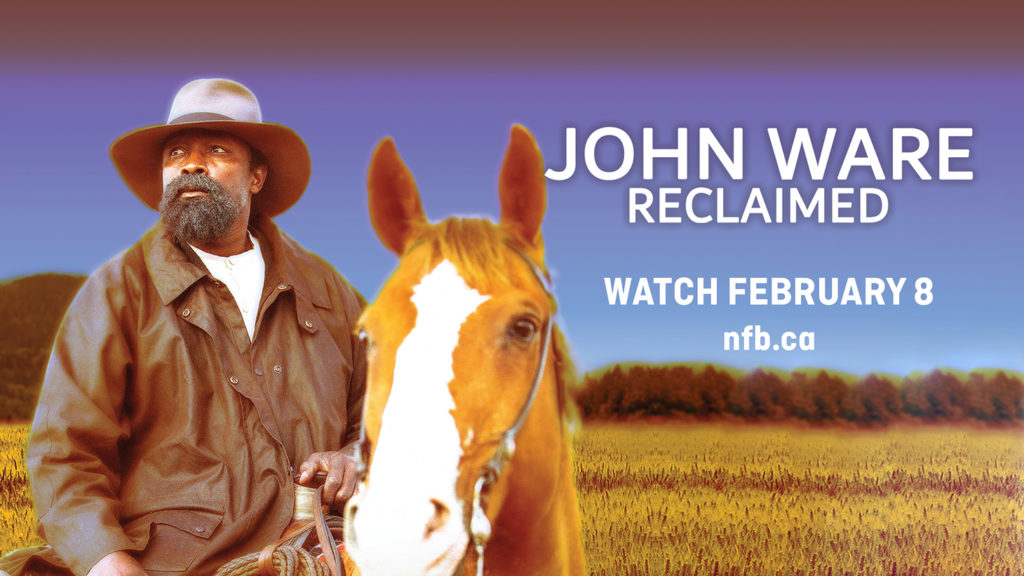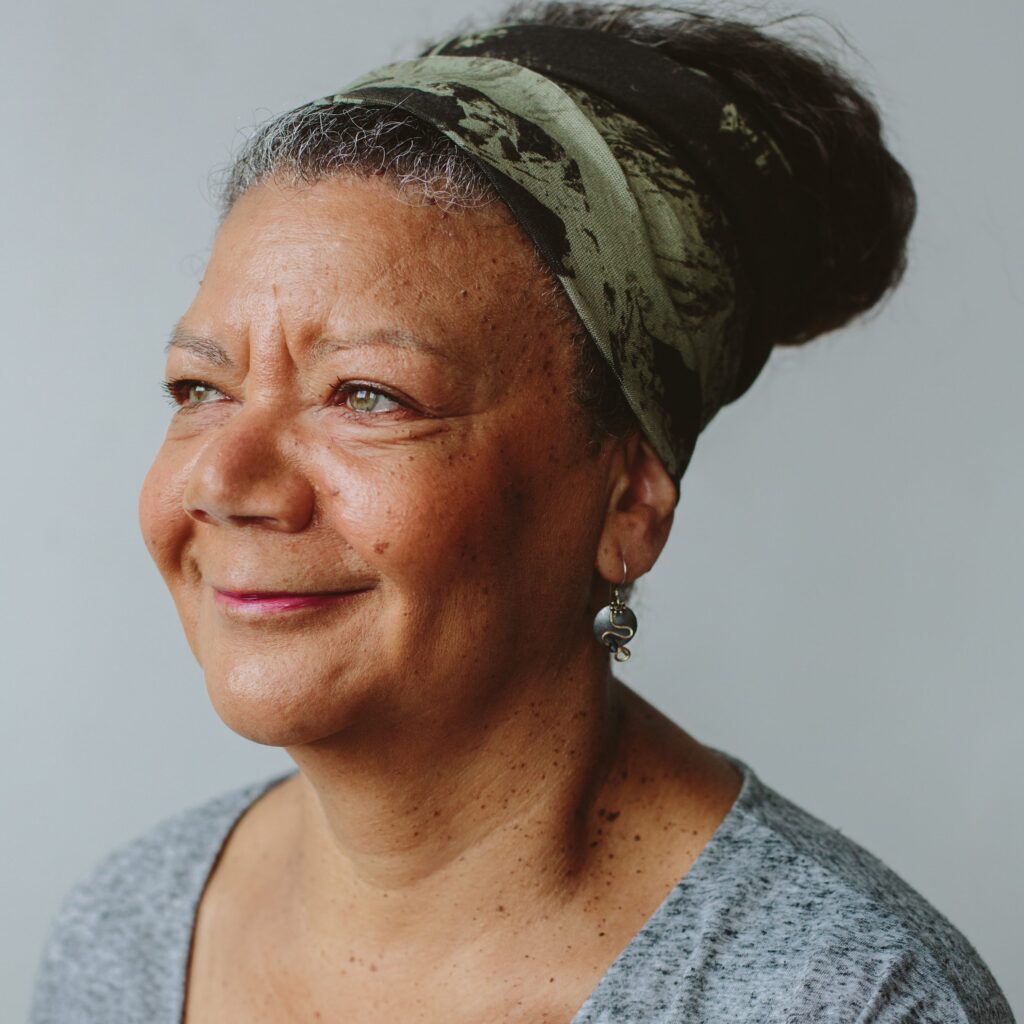Image Credit: Mike Tan Photo
Good morning everyone! Today I am SO excited to welcome another new contributor to the site, Cheryl Foggo. Cheryl is a multiple award-winning playwright, author and filmmaker, whose work over the last 30 years has focused on the lives of Western Canadians of African descent. In 2020 her NFB feature documentary John Ware Reclaimed, about the legendary Black cowboy who settled in Alberta in 1882, had its World Premiere at the Calgary International Film Festival where it received the Alberta Feature Audience Choice Award. The film is now screening at festivals across the country and on nfb.ca. Additionally in 2020, the 30th-anniversary edition of her book Pourin’ Down Rain: A Black Woman Claims Her Place in the Canadian West (please support your local independent bookstore if possible!) was released by Brush Education Press and was also launched as an audiobook read by acclaimed actor Karen Robinson through ECW Press. In 2019 she wrote and directed the short film Kicking Up a Fuss: The Charles Daniels Story, which received its Festival Launch in 2020, screening alongside John Ware Reclaimed. Her play John Ware Reimagined won the 2015 Writers Guild of Alberta Award for Drama and was produced most recently at Workshop West Theatre Company in 2017. She is a past recipient of the Sondra Kelly Screenplay Award from the Writers Guild of Canada and is the 2021 recipient of the Calgary Black Chambers Black Achievement Award in Arts, Media and Entertainment. She has a number of new projects upcoming in 2021, including a short play called The Sender for Obsidian Theatre Company’s 21 Black Futures streaming on CBC Gem throughout the year, and a production of her play Heaven at the Citadel Theatre. She is a descendant of Black pioneers who fled violent mob rule in Oklahoma to join the Black Migration of 1910 into Saskatchewan and Alberta. And today, she is sharing 3 things you should know about Black History in Western Canada.
Take it away Cheryl!

Image Credit: Shaun Robinson/National Film Board of Canada
1. Did you know that one of the first female entrepreneurs in Alberta was a Black woman?
In 1877 an African-American woman named Annie Saunders worked on a steamboat travelling along the Missouri River. Aboard the ship she met Mary Macleod who was enroute to southern Alberta to join her husband, Colonel James Macleod, then an officer with the North West Mounted Police. Striking up a convivial relationship along the way, Mary invited Annie to work as a nanny and housekeeper for the Macleod family.
Her relationship with the Macleods lasted for many years until the family moved to Macleod (the small fort town in southern Alberta that was named for them) in 1886. Annie chose to remain in the mountain hamlet of Pincher Creek. She ran 3 successful businesses there, including a laundry service, a boarding school and most famously a restaurant called “Auntie’s.” Her connections to the Macleod family and her reputation as an outstanding cook brought wide fame, and Auntie’s was a popular stopping point for influential people of the day. She died in Pincher Creek in 1898.
2. Did you know the most northerly all-Black community to have existed in the world is believed to have been Amber Valley, Alberta?
In the early 20th century concurrent events drew approximately 1500 African-Americans to Saskatchewan and Alberta. In 1907, the state of Oklahoma was created from what were then known as the Indian Territory and the Western Territory. African-Americans living in these territories held some rights of citizenship, including voting and property rights, in contrast to the southern states where many of them had been enslaved prior to 1865. When Oklahoma came into being Black citizens were robbed of these rights. Racist brutality including lynching and burning of their towns and homes escalated. Simultaneously, the Canadian government was promising American farmers 160 acres for a filing fee of ten dollars in northern Alberta and Saskatchewan.
Many African-Americans who were facing intolerable conditions in the South chose to accept that invitation, arriving principally between 1910 and 1911. The government of the time under Prime Minister Wilfred Laurier, caught off guard by the arrival of Black Americans at the border, reacted with hostility spurred by widespread Canadian outcry against Black immigration. This outrage was led by citizen petitions, Boards of Trade and newspapers. Despite this disappointing reception, most of the Black families chose to stay, isolating themselves by creating Black enclaves near Maidstone, Saskatchewan and Campsie/Barrhead, Breton (then known as Keystone), Wildwood and the aforementioned Amber Valley, all in Alberta. Many descendants of the Black migration of 1910 have made important contributions to Canadian life. Oliver Bowen was the engineer who designed and implemented the first leg of Calgary’s light rail transit system, known as the C-train. Eleanor Collins was the first Black person in North America to host a television program. Violet King Henry was the first Black female lawyer called to the bar in Canada. Reuben Mayes was an outstanding running back in the NFL for the New Orleans Saints and the Seattle Sea Hawks. Floyd Sneed was the drummer of the legendary 70s rock band Three Dog Night. Many other descendants of the Black Migration of 1910 have distinguished themselves in multiple fields.

3. Did you know that as many as 25% of cowboys in the old west were Black?
Among that number was the great Black cowboy and rancher John Ware, who arrived in the southern foothills of what we now call Alberta on a warm fall day in 1882, on the first major cattle drive from Texas via Idaho. Unknown factors persuaded him that southern Alberta was where he wanted to spend the rest of his life. He eventually established a successful ranch near Millarville Alberta, married and had a family with Mildred Lewis. In 1902 they relocated to southeastern Alberta near Duchess in order for him to expand his cattle herd. Many acts of survival, generosity, humour and his unmatched skill as a horseman launched his legacy that has lasted more than 115 years after his death in 1905.
John Ware was not a lone figure of Blackness in southern Alberta in the late nineteenth century. His wife Mildred’s large family, originally from Toronto, was full of compelling characters in their own right; musicians, carpenters, poets and a couple of excellent riders, in contrast to Mildred who wouldn’t go near a horse. Other Black neighbours and cowboys intersected with their lives, and although well known in their time, have been mostly forgotten. John Ware continues to be remembered in part through the many places in the province of Alberta named for him.
To learn more about the life of John Ware and more Black history, you can stream the National Film Board of Canada documentary John Ware Reclaimed which I wrote and directed, on nfb.ca.
Cheryl Foggo





This is fascinating history of the prairies that I was not familiar with. Thank you so much for sharing!